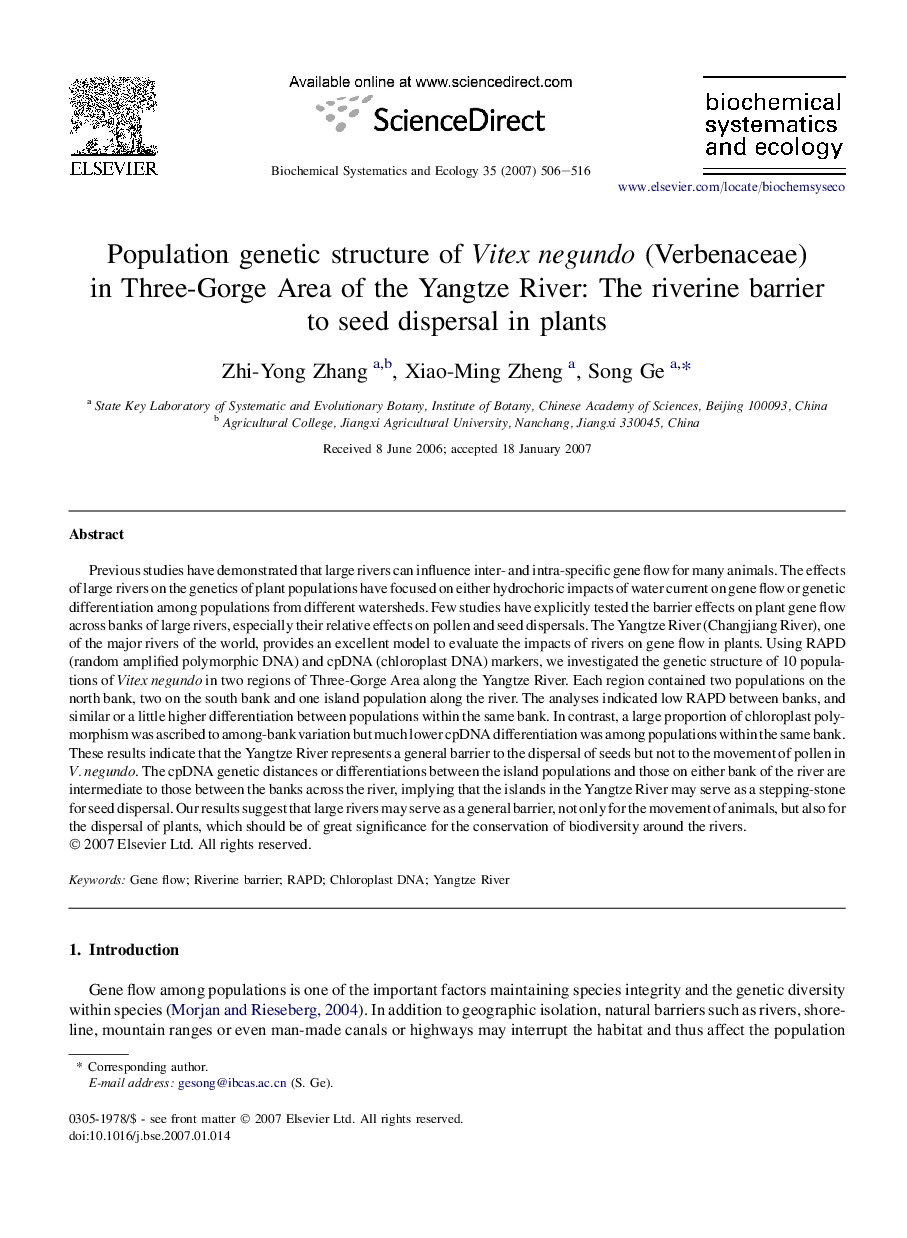| Article ID | Journal | Published Year | Pages | File Type |
|---|---|---|---|---|
| 1354674 | Biochemical Systematics and Ecology | 2007 | 11 Pages |
Previous studies have demonstrated that large rivers can influence inter- and intra-specific gene flow for many animals. The effects of large rivers on the genetics of plant populations have focused on either hydrochoric impacts of water current on gene flow or genetic differentiation among populations from different watersheds. Few studies have explicitly tested the barrier effects on plant gene flow across banks of large rivers, especially their relative effects on pollen and seed dispersals. The Yangtze River (Changjiang River), one of the major rivers of the world, provides an excellent model to evaluate the impacts of rivers on gene flow in plants. Using RAPD (random amplified polymorphic DNA) and cpDNA (chloroplast DNA) markers, we investigated the genetic structure of 10 populations of Vitex negundo in two regions of Three-Gorge Area along the Yangtze River. Each region contained two populations on the north bank, two on the south bank and one island population along the river. The analyses indicated low RAPD between banks, and similar or a little higher differentiation between populations within the same bank. In contrast, a large proportion of chloroplast polymorphism was ascribed to among-bank variation but much lower cpDNA differentiation was among populations within the same bank. These results indicate that the Yangtze River represents a general barrier to the dispersal of seeds but not to the movement of pollen in V. negundo. The cpDNA genetic distances or differentiations between the island populations and those on either bank of the river are intermediate to those between the banks across the river, implying that the islands in the Yangtze River may serve as a stepping-stone for seed dispersal. Our results suggest that large rivers may serve as a general barrier, not only for the movement of animals, but also for the dispersal of plants, which should be of great significance for the conservation of biodiversity around the rivers.
